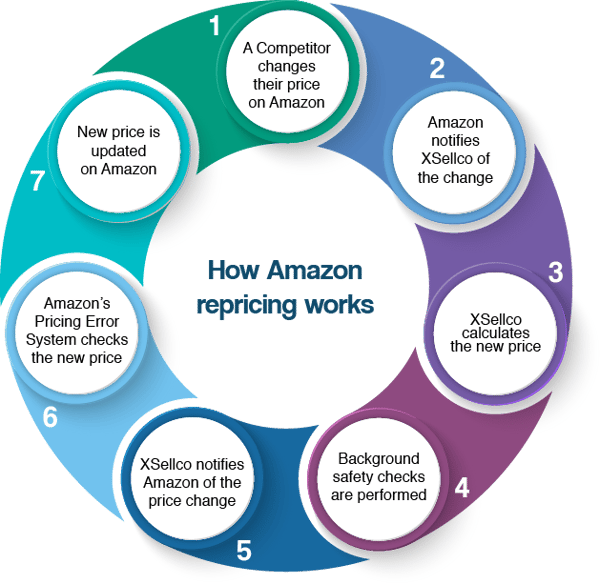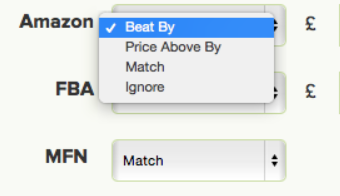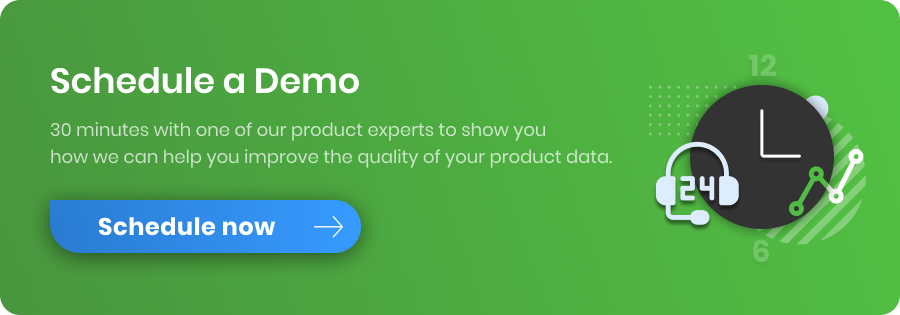Selling on Amazon can be very rewarding for merchants. However, with all retailers trying to generate as many sales as possible, competition is rife. Amazon itself is known for cutting its prices on a regular basis, especially around the festive season. So what are the best strategies for increasing your Amazon sales?
And how do you ensure you get the better of your competition to get the Buy Box?
Let’s find out how Amazon pricing works and the best ways to manage your sales.
Grow your Amazon revenue with a practical checklist to Amazon Pricing Strategies
Amazon pricing
Pricing on Amazon is very competitive. Not only does this affect the chances of winning the Buy Box, it is also one of the main contributing factors to a customer’s ultimate decision as to whether they ought to purchase from you or another seller.
So let’s take a look at the challenges of competitively pricing your products on Amazon.
How do you price items on Amazon?
Competitively pricing items on Amazon isn’t as simple as it seems. The logic on many marketplaces is: if sales are high then the prices get raised, if sales are low then the prices get lowered. However, Amazon’s algorithm is very complex and cutting your margins through price reductions doesn't always improve your position on the platform. That is why it is paramount to understand the various differences in pricing and the various pricing strategies.
There are two types of prices on Amazon that any seller must be familiar with, these are the item price and the total price.
Item price is the cost of a product only. This is the price customers will see minus shipping costs and any other factors that may affect the total price.
Total price or landed price is the price with everything included - this is what the customer pays at the end of the purchasing process. The following are included in the total price:
- Shipping and handling charges
- Discounts, rebates, or special sales/promotions
- Shipping method
- Business practices, such as any reduction or elimination of shipping charges on an order, or of any other order-related fees and expenses
- Low-price guarantees

If you find your product is in the ‘Other Sellers on Amazon’ section (where you don’t have the Buy Box yourself) you ought to bear in mind Amazon lists products based on product price AND shipping price.
After taking all this into account, you can see why a simple price reduction doesn’t always improve your position. Competitively pricing items on Amazon is no easy task. You should always try to take all the above factors into consideration when listing or repricing an item on the platform. A slight change to anything from shipping charges to discounts can make a substantial change to your product’s Amazon rank.
What is Amazon’s pricing model? What is Amazon’s pricing model?
Amazon’s pricing model is based around keeping prices as low as possible for the buyer. This means the prices of products can change numerous times, even during a single day. Keeping prices low drives loyalty within their customer ranks, and ultimately results in Amazon benefitting from merchants competing for the Buy Box.
Amazon’s pricing model also takes things one step further using convenience. We all see the convenience of buying online. But when you have so many merchants competing to be a top seller for just one product, you always have a depth of easy choice for customers, that almost never runs out of stock. This again drives loyalty, increases sales and keeps both merchants and customers coming back for faster rolling profits and purchases.
As a merchant, fighting for the Buy Box is a massive part of success when using Amazon for selling. But even if you don’t always have the Buy Box, there is a silver lining. Outside of the Buy Box, products are placed by product price combined with shipping price. This means being a cheaper merchant can still get you noticed sometimes.
What are pricing tactics?
According to Business Dictionary, the definition of a pricing tactic is ‘A short term attempt to manipulate the price of a good or service in order to achieve a particular business objective’.
Pricing tactics on Amazon do not differ much from this exact definition. With Amazon, the objective is to gain the most reputable and effective position to generate sales, which is the Buy Box.
Amazon vendors are required to use various tactics to gain top spot and generate those sales. Many choose to adjust price through discounts, whilst others change their shipping costs or type.
Amazon repricing
Many sellers choose to undercut their competition, usually by $00.01 or £00.01 in order to earn a better place in the marketplace. Undercutting the competitors is called ‘repricing’ and it can be done via:
Manual Repricing
As a seller, you can choose to reprice yourself. This involves changing the price manually through Amazon Seller Central - or via other sites should you be managing your products through a third party.
This will only work for sellers with a few products, as it is time consuming. However, it does give you a clearer understanding of your own and your competitor’s products and pricing.
Pros:
- Complete control
- Hands on approach makes it easier to understand your own products and your competitors
Cons:
- Only useful for smaller product catalogues
- Highly time consuming
- Depending on your experience, you may miss things
Amazon Repricing tools
To help with the competitive nature of pricing, repricing tools like Xsellco, RepricerExpress, and RepriceIt can be used to automatically undercut competitors on the same listing. You can even set a minimum price so the system doesn’t go below a profitable level.

There are two ways in which repricing tools work:
Rule-based repricing
This type of tool works on rules set by the seller themselves. An example of a rule could be to undercut by £0.01. Again, this can be a little time consuming for the seller to set up.
Algorithmic repricing
This type of tool is by far the most advanced. It is an algorithm-based tool that weighs a number of metrics to determine the best possible price for your item, with the best ROI. It takes into account everything needed to win the buy box which allows the seller to see the best return rate.
While this benefits your profit margin, it’s worth bearing in mind that algorithmic repricing tools are more expensive and best suited to professional sellers with plenty of items.
There are pros and cons that need to be taken into consideration when comparing types of repricing tools. However, if you are inexperienced with repricing, using an Amazon repricing tool is recommended.

Pros of using an Amazon repricing tool:
- Automatic adjustments save time
- Margins can be minimised and therefore profit maximised
- Can maximise your ROI if used correctly
- Usually better for larger product catalogues
Cons of using an Amazon repricing tool:
- Can be pricey
- Will often give you less understanding of what helps your products and hampers competitors than manual repricing
How does Amazon track price drops?
There are plenty of tools to help you track repricing on Amazon, but how does Amazon track prices itself?
Amazon has a built in algorithm that recognises any change in price. Whether the change is to the item itself, or to another factor such as shipping. It is this algorithm that allows Amazon to dynamically adjust product rankings quickly and effectively, so their own competitors can’t keep up.
Because of the dynamic nature of prices of Amazon, it is vital that you have a tool to alert you to any price drops that may have occurred. Good options include:
Double your Amazon sales with our 9 proven tips.The 4 types of pricing strategy for Amazon
There are 4 main types of strategy when it comes to pricing on Amazon. As Amazon doesn’t always give the buy box to the cheapest vendor, there is a lot to play for. The 4 strategies that you can use when selling on Amazon are:
Economy
Economy is a strategy that uses small profit margins, with low advertising costs. It aims to make the product available to a large market. It will usually have little to no shipping costs and will rarely rely on sale prices. This is a useful strategy for products that fulfill everyday needs, such as detergents.
Premium
Premium strategy takes the opposite approach to that of economy strategy. It is usually high price and often uses brand name to generate the extra interest. As brand names generally have less of an impact on Amazon, those using premium strategy will often turn to discounts on high end products to generate interest. This strategy tends to be most useful for reputable brands in their sector, such as Gillette or Lynx/Axe.
Skimming
Skimming strategy takes an adaptable approach to pricing strategy. Using this strategy, an Amazon vendor would often start with a higher price until the competition matches it. At that point, the price would be lowered to stay competitive. This type of strategy is ideal for merchants who have a unique product but anticipate competition coming their way. This is because the strategy aims to maximize profit in the short term before the competition can catch up.
Examples of brands using this kind of strategy are Sony and Microsoft, who often price their games consoles (PlayStation and XBox) higher when first released. They then reduce the price with a sale, before dropping it to the sale price permanently when the competitor releases their console.
Penetration
Penetration strategy is when you place prices lower than competitors to gain market share. This is commonly used by new brands or existing brands releasing new products. In most cases, this is done in the form of a promotion, with prices rising after objectives are reached. This strategy is not profitable in the long run. However, it can help to get the Buy Box in the short run and then generate interest in your specific product through brand loyalty afterwards.
Due to Amazon not necessarily giving the Buy Box to the cheapest option, this strategy tends to work better for more unique products on the platform.
An example of this is vegan products, which are typically more pricey and do not have an abundance of worldwide competition yet.
Getting Practical with Amazon Pricing Strategy
Omer Riaz, CEO at Urtasker.com and Amazon Marketing Specialist has shared with us his profit- driving Pricing Strategy:
Determining the right pricing is very important for any business, especially in E-Commerce and Amazon. Deciding what price to sell your product is not an easy decision to make. If your prices are too high, customers will buy from your competitors and similarly you will end up eating your profits if your price is too low. You need to really understand, and more importantly, calculate your profit margin before setting up a pricing strategy.
I strongly believe that the “drop prices to get sales” strategy does not work in every case at Amazon. Before pricing your product, first calculate your minimum and maximum sales prices. You can do this by using your sourcing costs as a reference. Now, add all advertising and admin costs to come up with a minimum sales price.
For example if the sourcing cost of a product is $5 and it requires $5 in advertising, plus admin costs, then a minimum price for this product should be $10. This minimum price is the price where you break even.
Now determine the maximum price you are willing to sell your product. This is the price where you make most of the profit and usually it is 5 times or 6 times your costs. For example, if the minimum selling price is $15 then maximum price should not be more than $90.
Now you use this minimum and maximum price number in your pricing strategy to get more sales, increase conversions or increase profits.
Consider as well, these tips:
1) Decreasing Price may be used to boost daily sales
Small reductions in price can significantly increase conversion rates and daily sales.
Increased conversions result in:
- Increased daily sales
- Additional profit earned as a result of more units sold.
- Increasing the price can also increase perceived value, leading to higher conversion rates and more daily sales.
2) Increasing Price may result in higher daily profit (competitors are out of stock)
- Increased daily profit as a result of higher prices
- Slight increase in conversion rate
3) Increasing Price Can Decrease Sales but Increase Profits (Less inventory or going out of stock)
Even if sales are reduced by an increase in price, extra profit generated per sale, can yield higher daily profits overall.
Mastering the Amazon algorithm - The Buybox
The Buy Box is displayed on individual product pages and is the quickest and easiest way for a customer to buy.
Within the product detail page, customers will find the ‘Buy Box’, which leads them to purchase the product. The same product can be sold by multiple sellers, these sellers may be able to compete for the Buy Box. Amazon will decide through an algorithm which seller is the best fit to get the Buy Box.
There are a number of factors that influence the competition for the buy box. They are as follows:
- Fulfillment method
- Pricing
- Refund rate
- Order defect rate (ODR)
- Stock availability
- Seller response time
- Shipping time
- Reviews
CPC Strategy has the perfect recipe with all the ingredients that contribute to obtaining the Buy Box.
The primary factors that influence sellers getting the buy box are:
1. Fulfillment by Amazon (FBA)
This allows sellers to send their items to the fulfillment center and Amazon will ship it out when a customer orders the item which allows for a faster selling process. Plus, this means customers will be buying via Prime, which Amazon consistently promotes.
2. Competitive pricing
This takes into account shipping price as well as product price. It’s important to note that having the lowest price does not necessarily win the buy box, but it is a main contributing factor.
3. Reviews
Both Amazon and customers want to know how trustworthy you are as a seller. Amazon will not only consider your historical account performance but look for a low rate of negative feedback.
For more on the other ingredients that you have control over, and that have a big impact in the Buy Box, visit: How to win the Buy Box?
On a mobile site the “Other Sellers on Amazon” option is not available, the buy box sits underneath the product image - the offer listings are out of sight.
Winning the buy box is essential if your customers buy on mobile more than desktop. As the volume of mobile-shoppers is increasing rapidly, it becomes all the more essential.
The introduction of Amazon Echo is also something to bear in mind. When customers purchase through Amazon Echo, they are presented with the item with the Buy Box.
As Amazon Echo is growing in popularity, winning the Buy Box becomes all the more vital. If you don’t have the Buy Box then you cannot make sales through Echo.
Final thoughts
There are no cutting corners when it comes to landing the Buy Box, or succeeding on Amazon. It will take time, and some trial and error. However, the results of landing the holy grail of Amazon sales, the Buy Box, are well worth it.
Make sure to consider the various strategies mentioned above, and find the one that is right for your products, brand, and general business. With the right strategy, success is never far away.
If you are looking to ramp-up the quality of your Amazon listings, then you'll probably find our eBook Double your Amazon Sales useful. Download it and learn how to improve the quality of your feed and your campaigns. Or ask to talk to someone from our team of feed specialists.
